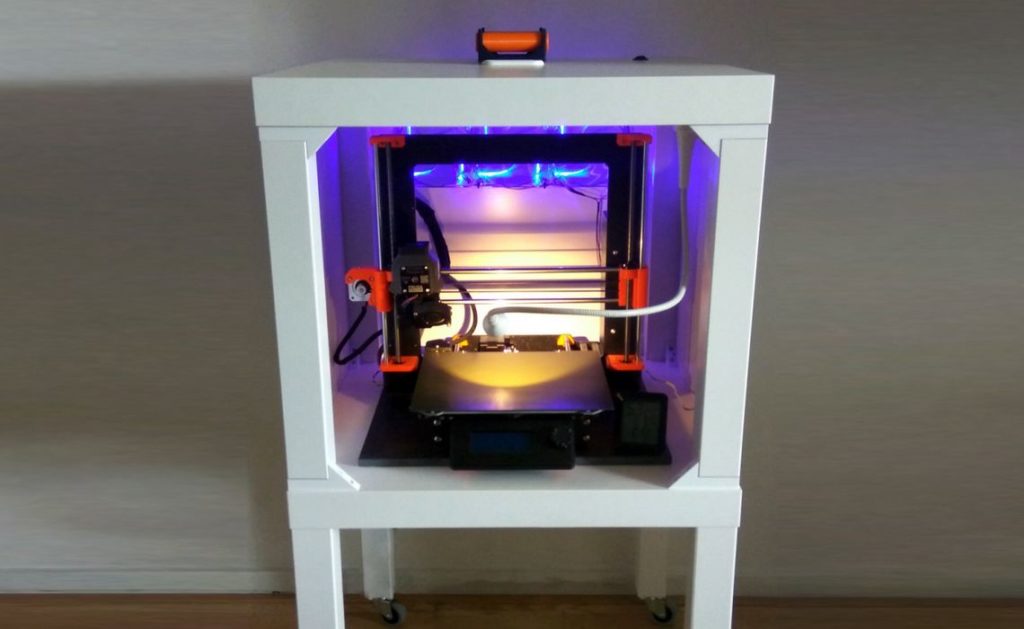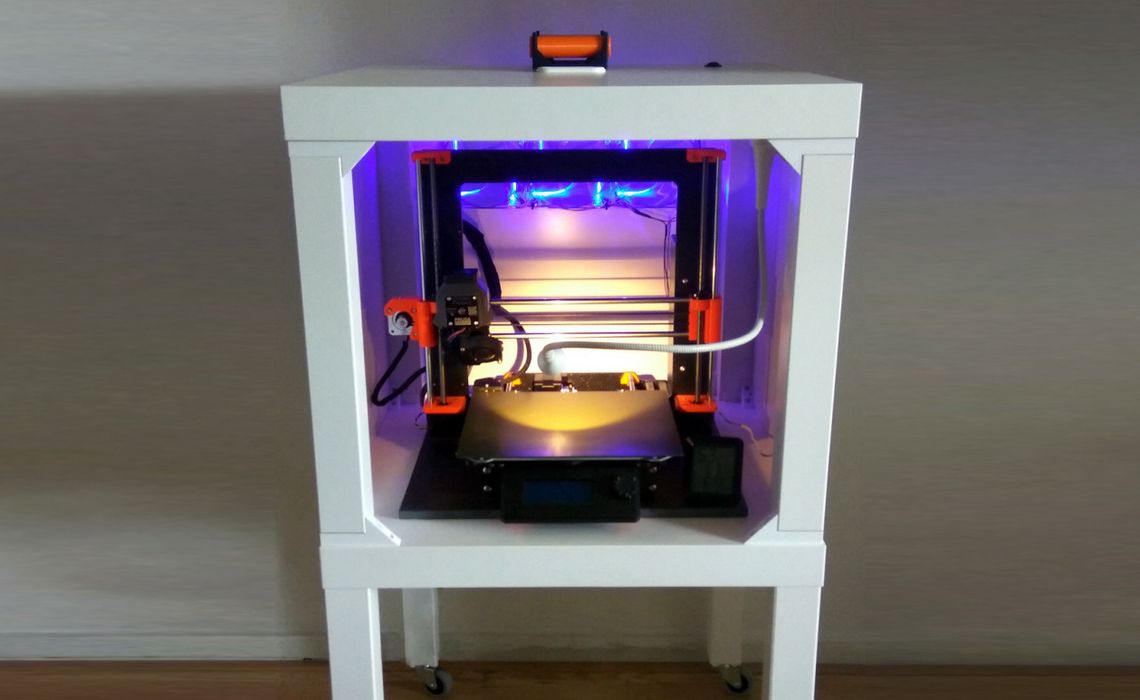
3D print enclosures are a common homebuilt accessory, but how do you know you’re doing it correctly?
There’s a reason many people have undertaken a project to build an enclosure around their open gantry 3D printer: print quality.
3D Printer Enclosure Benefits
Print quality is often difficult to achieve on an open gantry 3D printer for a few reasons. However, the low price point for open gantry equipment means there are many units operating. Some of the operators seek to increase their print quality by means of an enclosure.
Print quality is affected by two factors related to enclosures. First, there’s the possibility of drafts. These are winds that pass over the print area, suddenly changing the thermal situation. The best parts are printed in highly consistent thermal environments, because the print parameters assume that is the case. By disturbing the environment, the print parameters are temporarily off.
One purpose of an enclosure is to deflect any stray wind and ensure the thermal situation is consistent within the enclosure.
The second factor affected by an enclosure is the heat level. Some commonly used 3D print materials (I am looking at you, ABS) tend to warp significantly. This is because they are extruded at a far higher temperature than other materials, making the thermal gradient (the difference in temperature between ambient and extrusion) very high. That can generate warps in the print as some hot material expands and other zones shrink.
The enclosure can capture some stray heat from the heated print surface and raise the overall temperature within its volume. This in turn reduces the thermal gradient and tends to minimize warping.
There’s only so much you can get, however, as typical commercial equipment using heated chambers operate at a minimum of 70C, a level difficult to achieve with passive heating.
Building Your Own Enclosure
Given these benefits, many 3D printer operators have endeavored to create their own enclosures out of whatever cheap materials are handy. Some use modified versions of IKEA’s cheap “LACK” table, which can be obtained for less than US$10. Others use cardboard, acrylic, metal, wood or even plastic wrap.
Some of these designs are indeed rickety or even dangerous, but let’s look at the factors one should consider when examining a potential enclosure design.
Safety
I put safety first, as everyone should. Here one should consider the flammability of the enclosure material because the hot end of a 3D printer is very hot. There have been cases where fires have ignited in a 3D printer, and adding fuel is definitely not a good idea. If you haven’t already obtained a fire extinguisher to be placed near your 3D printer, this would be a good time to do so.
Enclosures must be rigid, you cannot allow the possibility of loose bits falling into the path of the moving printhead. For this reason I would be extremely wary of any enclosure made from plastic film.
One very important thing to remember is to consider how the machine might operate in a failure situation. For example, if a print dislodged and was being tossed around by the print head, would it strike the enclosure? It’s easy to envision an enclosure for a machine that operates perfectly, but as we all know, 3D printers aren’t like that.
Insulative Properties
One key benefit of an enclosure is to raise the build chamber temperature. If the enclosure is made of thin material unable to capture that heat, what’s the point?
Visibility
As said above, 3D printers do fail, and often the only way to detect the fail is by seeing some kind of carnage taking place on the build surface. Does the enclosure block that visibility? Is there at least one or two windows to see inside and ensure the printer is operating correctly? Alternatively, is there a webcam inside that can compensate for this? And can that webcam operate at higher temperatures?
Operation
While some operators have installed remote control systems (like OctoPrint) on their equipment, many people have not. An enclosure can prevent immediate access to the machine’s control panel. This might not seem like a big issue, but it could be if there’s something going wrong and you need to immediately access controls.
Accessibility
When the print completes, how does the enclosure permit access to the build volume? Is there a door through which prints will be removed? Does the removable build plate with print attached fit through this opening? Do you have to do print removal within the enclosure, or remove the entire enclosure to remove a print?
Cost
A low cost solution is obviously desirable, but that must be measured against the other factors. I recall years ago being presented a purchase option for major software contract, and being told that it was the cheapest, but that it didn’t really work. We chose instead a more expensive option that actually did work.
Cost is not the most important factor, but it should be considered against options that provide enclosure benefits.
I should point out that there are several commercially designed enclosures that incorporate all kinds of interesting functional and safety features. If one had the budget, these would be the best options.
Future Sizing
Finally, what happens next? What if your next 3D printer just happens to be larger? Will the enclosure accommodate the new equipment? Will you have to take it apart and rebuild it? How much will that cost? By thinking ahead it might be possible to cut your enclosure costs in half.

